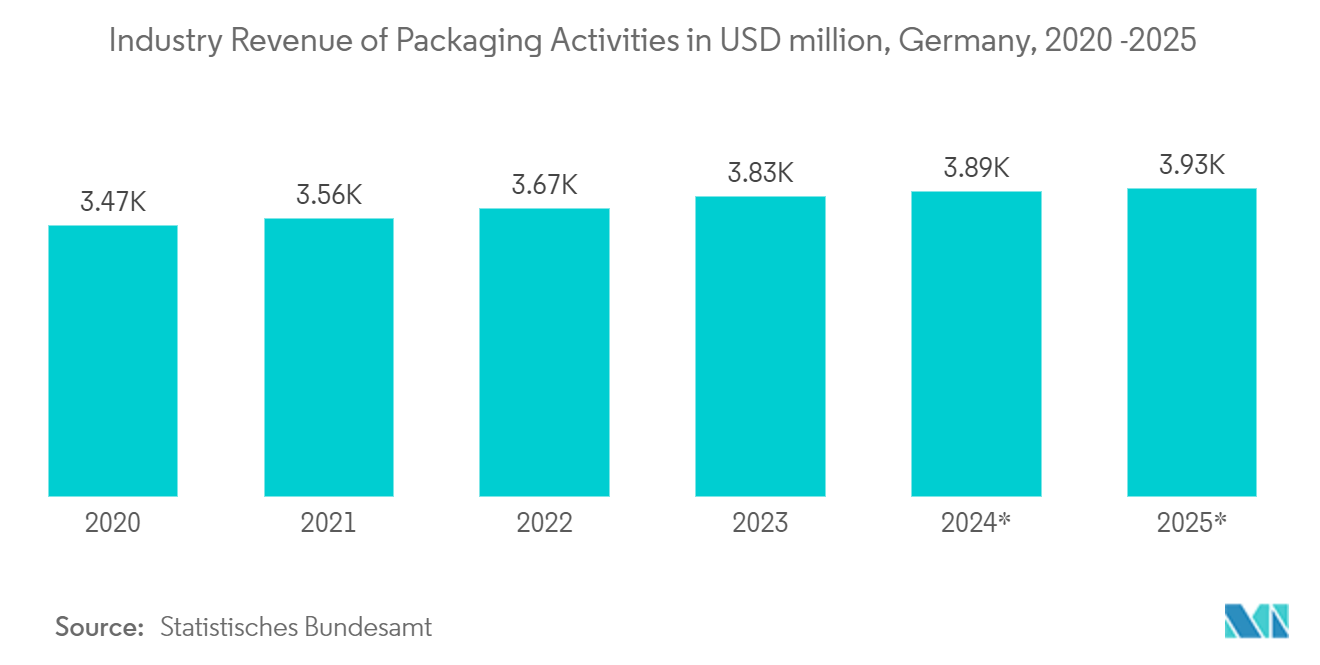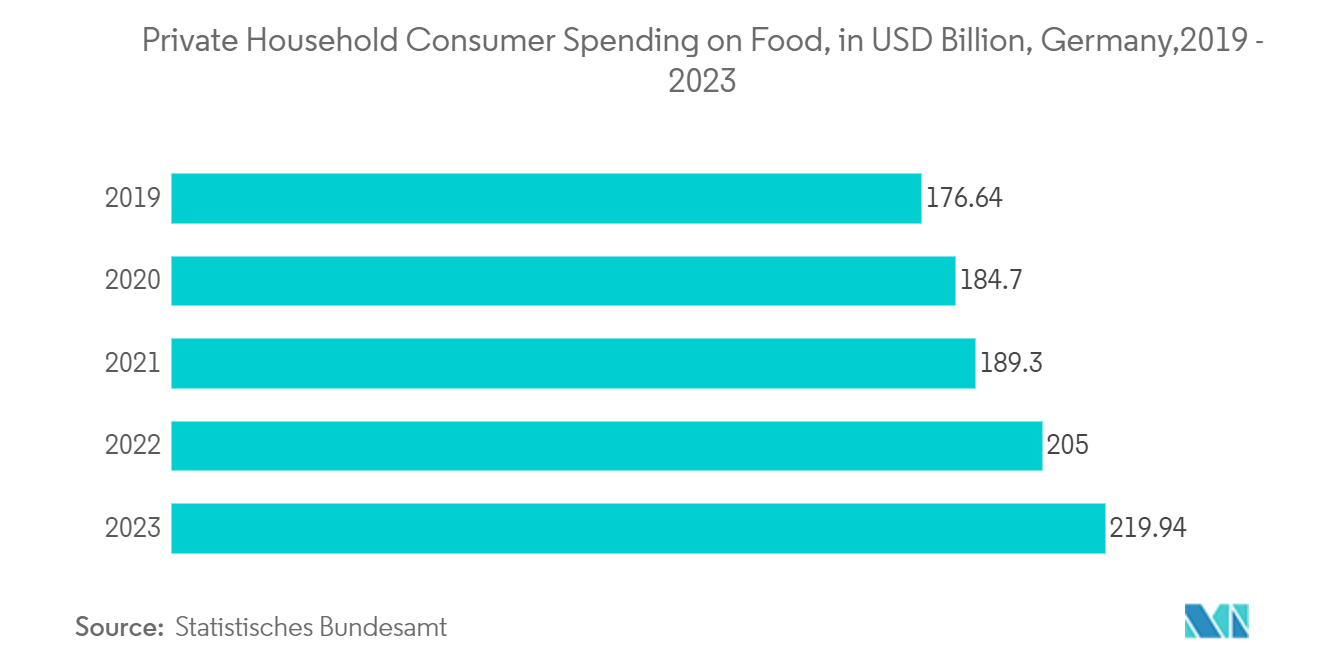Market Trends of Germany Plastic Packaging Films Industry
Polyethylene Segment to Hold Significant Market Share
- Polyethylene (PE) stands out as the dominant plastic material in the region, prized for its diverse physical properties. Its widespread adoption can be attributed to the cost-efficiency of its production, setting it apart from other plastics. Polyethylene boasts the lowest softening point among primary packaging plastics, reducing energy consumption. LDPE and LLDPE are the two other prevalent variants alongside PE in the flexible packaging sector. Widely employed in making plastic bags, films, and geomembranes, polyethylene is lauded for its lightweight nature, partial crystallinity, and notable traits, such as chemical resistance, minimal moisture absorption, and sound insulation.
- Polyethylene, known for its flexibility, high moisture barrier, and durability, also excels in low-temperature performance. It stands out for its unique ability to seal without additional coatings. This material forms a robust barrier, whether used alone or in combination with others. Moreover, its eco-friendly nature increasingly appeals to packaging film manufacturers, addressing sustainability concerns.
- Product visibility significantly influences purchasing decisions. Consumers gravitate toward products showcased in transparent packaging, driving the demand for polythene films across various industries. Transparent packaging allows consumers to see the product before purchasing, which builds trust and increases the likelihood of a sale. Manufacturers of polyethylene barrier films are increasingly prioritizing transparency to capture a larger market share.
- This trend is particularly evident in the food and beverage industry, where clear packaging is essential for displaying product quality and freshness. The surge in packaging activities in Germany is a crucial driver for the rising demand for polythene-based packaging films. The revenue of the packaging industry in Germany surged from USD 3,469.27 million in 2020 to USD 3,834.29 million in 2023, and it is projected to climb further to USD 3,930.22 million by 2025. This growth is attributed to the increasing adoption of transparent packaging solutions by various end-user industries, including food and beverage, pharmaceuticals, and consumer goods.
- Current reductions in polyethylene prices across Europe present a significant growth opportunity for manufacturers of polyethylene barrier films. These lowered prices enable manufacturers to secure higher margins and pave the way for increased revenues. The cost savings from lower raw material prices can be reinvested into research and development, enhancing product quality and innovation. This competitive pricing advantage may also allow manufacturers to expand their market share by offering more attractive pricing to customers.

Food Segment Expected to Hold Significant Share in the Market
- A rising appetite for baked goods, confectionery, and convenience foods in Germany drives the demand for flexible packaging, notably polyethylene barrier films. These films, with their moisture-barrier properties, play a crucial role in extending the shelf life of products. Given the strong consumer preference for easy-to-open packaging, Plastic film solutions dominate the packaging landscape, especially for ready-to-eat or convenience foods.
- Rising food consumption in the region is a crucial driver behind the increasing demand for plastic films tailored to diverse food products. This trend is fueled by the need for better packaging solutions that ensure food safety, extend shelf life, and enhance product presentation. As consumers become more health-conscious and seek convenience, the market for plastic films in food packaging continues to expand, offering opportunities for innovation and growth.
- In Germany, consumer spending on food witnessed a notable rise, climbing from USD 176.64 billion in 2019 to USD 219.94 billion in 2023, driven by escalating consumption trends. This increase reflects a growing demand for diverse food products, influenced by factors such as higher disposable incomes, changing dietary preferences, and an expanding population. The trend indicates a robust market potential for food-related businesses and investors.
- Further, the rise in per capita food expenditure in Germany signals a burgeoning market for diverse food products, presenting a ripe opportunity for the flexible packaging sector. This growth is driven by increasing consumer demand for ready-to-eat meals, snacks, and premium food items. Plastic packaging manufacturers stand to benefit from this trend by tailoring their offerings to match consumer demands for convenience, quality, sustainability, and brand appeal. Additionally, advancements in packaging technology and materials can further enhance product shelf life and reduce environmental impact, aligning with the growing emphasis on eco-friendly solutions.
- Germany emerges as a frontrunner in Europe's e-commerce landscape, fueled by a rapid rise in internet usage. By 2023, e-commerce had already permeated 80% of the German market. Additionally, the nation's online community is set to expand from 62.4 million in 2020 to 68.4 million by 2025. Noteworthy is the rising popularity of plastic film packaging in e-commerce. Its allure stems from heightened protection and durability, effectively shielding products from damage and leaks and ensuring bundled items remain secure. This surge in e-commerce is also bolstering the demand for online food delivery, further emphasizing the need for efficient plastic film packaging.


